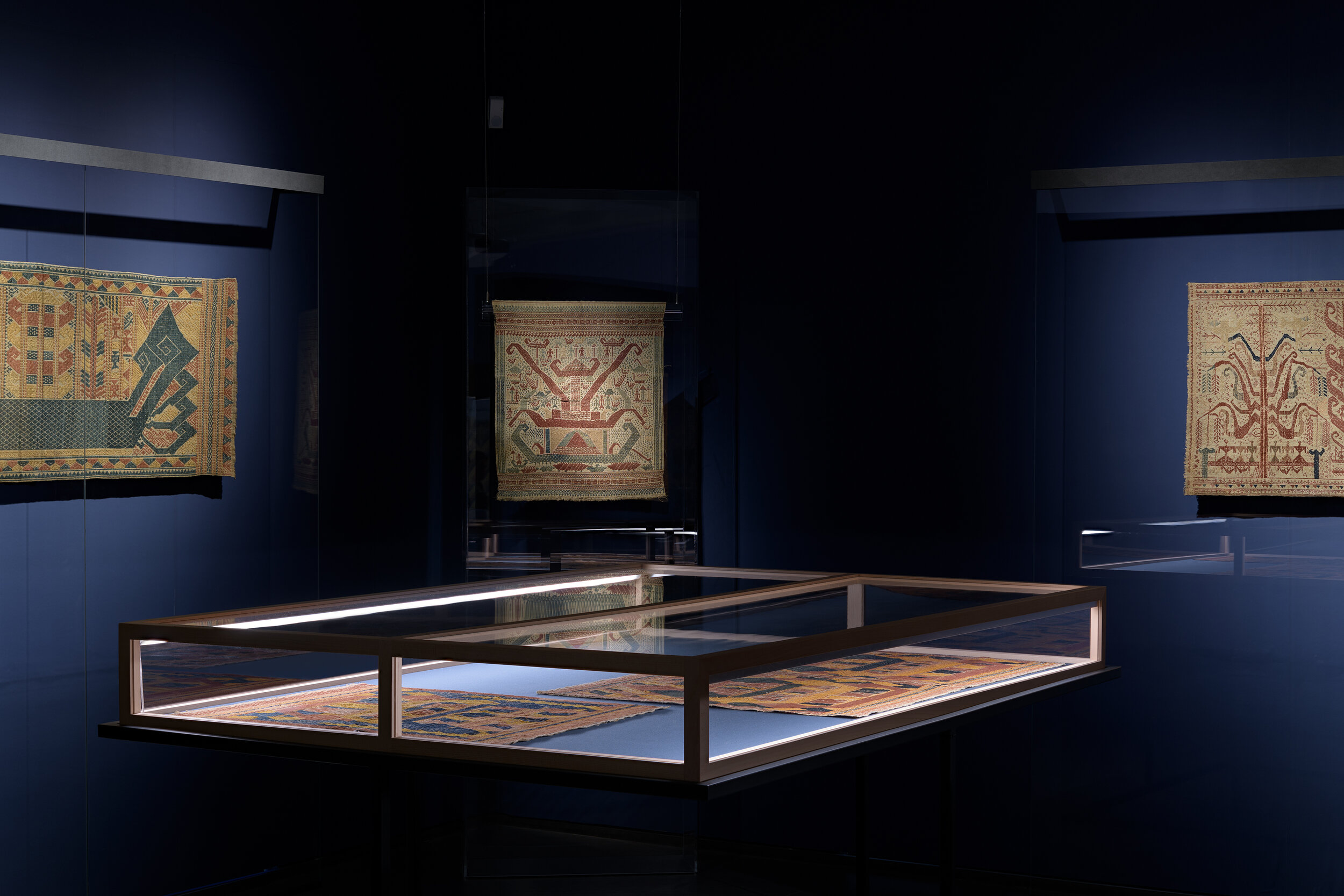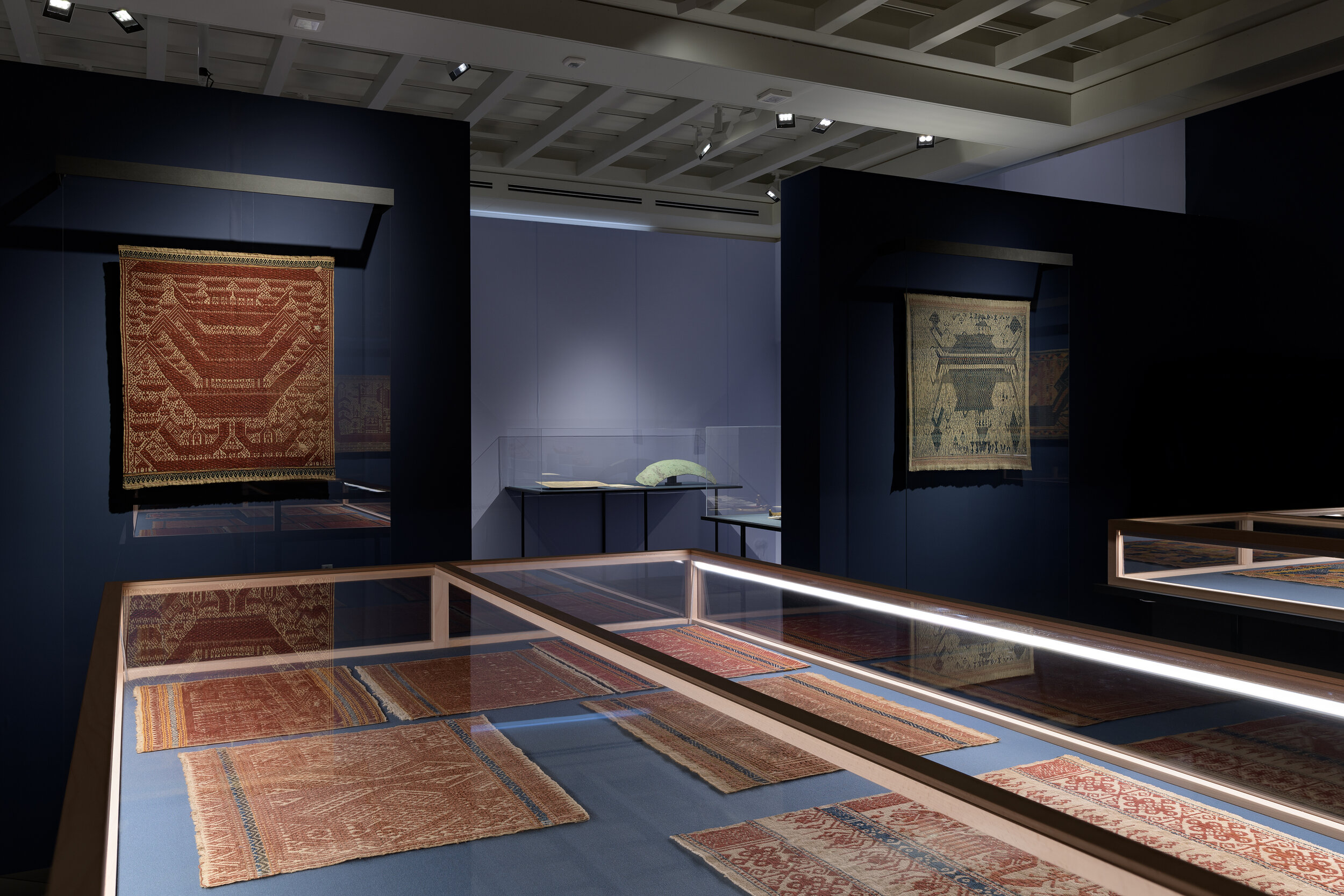A Complimentary Invitation | International Hajji Baba Society hosts Ships and Passages: Alfred Steinmann's Research on the Ship Motif in Indonesia: A Zoom Presentation
International Hajji Baba Society hosts
Ships and Passages: Alfred Steinmann's Research on the Ship Motif in Indonesia
A Zoom Presentation featuring
Drs. Paola von Wyss-Giacosa & Andreas Isler
Sunday, October 24, 2021 | 1 PM EST
Dear Art of the Ancestors members,
Indonesian textiles impress with their aesthetic and technical richness. Particularly fascinating is the vibrancy of ritual fabrics from southern Sumatra whose main motifs are ships ranging in design from figurative to abstract. In Europe, these cloths have become known as ship cloths. They are made using the floating weft technique and have not been produced for a hundred years; their function can only be partially reconstructed.
For many centuries, the people of southern Sumatra saw themselves as living on a ship floating between the sea and the heavens. This idea was woven into fascinating textiles featuring elaborate depictions of ships carrying humans and animal-like beings. These ship cloths were used in ceremonial and ritual contexts.
Alfred Steinmann, one of the former directors of the Ethnographic Museum of the University of Zurich, was one of the first scientists to study these textiles in depth and to try to interpret them. In several writings that appeared from 1937 to the 1960s, he examined the ship's motif from a cultural and historical perspective, from the Bronze Age to the present day. He interpreted the elaborately patterned ship cloths as depictions of the passage of dead souls into a land of ancestors. Although later researchers added other layers of interpretation to Steinmann's, to this day his contribution remains essential for understanding these textiles.
An ongoing exhibition at the Ethnographic Museum of the University of Zurich is the first presentation ever of the ship cloths owned by the museum. The show sheds light on a complex chapter in the history of research and collecting in Zurich ethnology. The exhibition is curated by Dr. Paola von Wyss-Giacosa and Dr. Andreas Isler. Their article “Voyages into the unknown”, summarizing the Indonesian ship textiles and the Zurich exhibition, has just been published in the Hali 208, summer 2021 volume.
Paola von Wyss-Giacosa and Andreas Isler have been teaching together at the Ethnographic Museum for many years and have collaborated on research and exhibition projects. Dr. Wyss-Giacosa has been a lecturer, researcher and guest curator at the Ethnographic Museum, University of Zurich, since 1997. Her research interests include Historical Visual Anthropology, the use of artefacts and pictorial sources in the early modern discourse on religion and idolatry, and the History of Ethnographic collections. Dr. Isler is curator at the Ethnographic Museum of the University of Zurich with responsibility for the Department of the Orient and Southeast Asia and is involved in teaching at the Faculty of Arts on topics of museum anthropology, material culture and ethnology of religion. He is interested in cultural-historical aspects of collections and artefacts, especially in the significance of images and objects in religious research.
Drs. Wyss-Giacosa and Isler will combine a PowerPoint presentation with a virtual guided tour during the webinar, to be able to show the audience the actual Zurich exhibition in situ. After their presentation, Drs. Wyss-Giacosa and Isler will answer questions from the audience.
— Austin Doyle, M.D.
Program Director for the International Hajji Baba Society
Registration
There will be no charge for attending this program. There is a Zoom limit of 500 people entering the presentation. To register for the zoom program by Drs. Wyss-Giacosa and Isler, click on the link below.
After registration, attendees will automatically receive a link to the Zoom meeting.
Please verify that you have the meeting link email prior to the meeting date.


